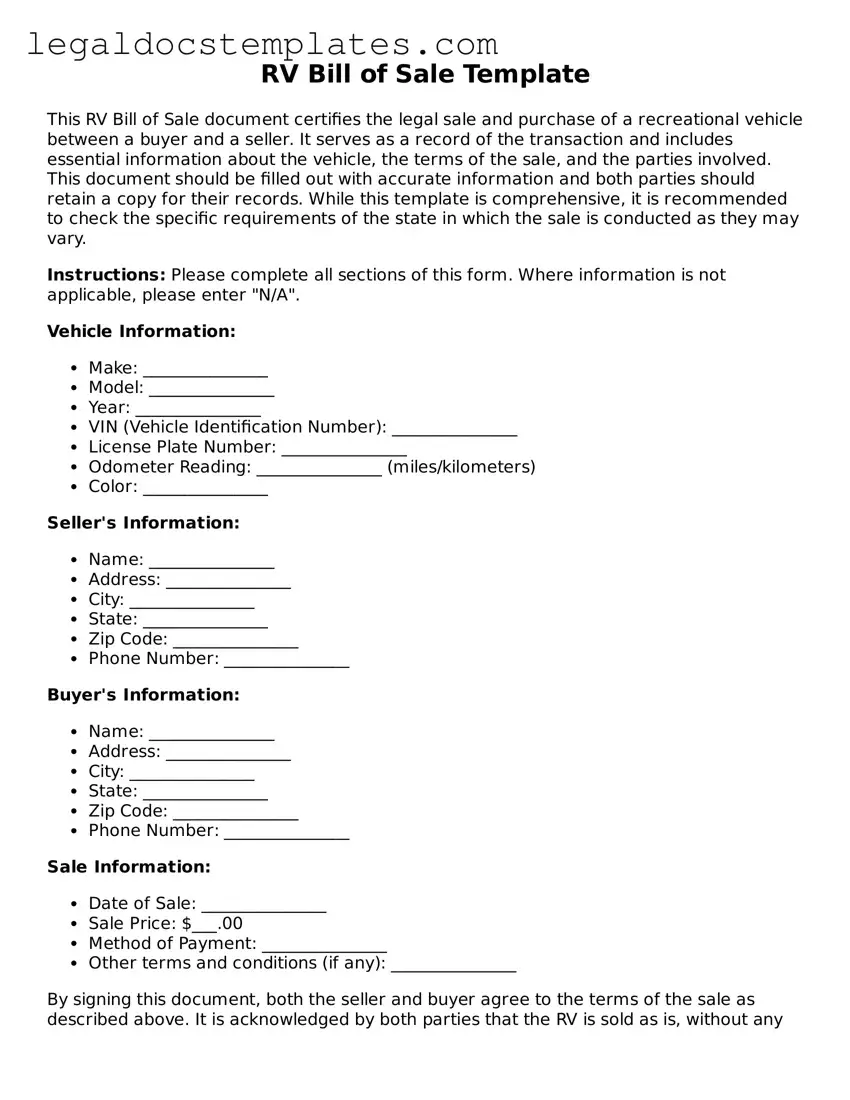Filling out a Recreational Vehicle (RV) Bill of Sale form is a crucial step in buying or selling an RV. It acts as a legal receipt that details the transaction. However, it's common for individuals to make errors during this process, affecting the validity of the document and potentially complicating the transaction. Recognizing and avoiding these mistakes is key for a smooth transfer of ownership.
One common mistake is neglecting to include all necessary information about the buyer and the seller. This includes full legal names, addresses, and contact information. Without this information, the document may not provide enough detail to be legally binding or useful in resolving any future disputes that may arise regarding the transaction.
Not accurately describing the RV is another frequent error. The bill of sale should contain a detailed description of the vehicle, including the make, model, year, Vehicle Identification Number (VIN), and any other distinguishing features. Omitting these vital details can lead to misunderstandings or misrepresentations about what is being sold.
Often, individuals fail to verify or include the correct RV identification number (VIN). The VIN is critical for identifying the specific vehicle in question, especially for registration and insurance purposes. A mistake in recording the VIN can lead to legal issues or complications in proving ownership.
A failure to specify payment terms is also a common oversight. The document should clearly outline the sale price, down payment, and any installment arrangements if applicable. Complete clarity about the financial exchange helps prevent any future conflicts related to payment.
Ignoring the need to disclose the RV's condition, including any known issues or damages, can pose significant problems. Sellers should be upfront about the RV's state to ensure the buyer is fully informed. This honesty can protect the seller from potential legal challenges regarding the condition of the RV at the time of sale.
Forgetting to have the Bill of Sale signed and dated by both parties is a surprisingly common mistake. Signatures are essential for the document to be considered valid and legally binding. Additionally, the date of the sale is crucial for record-keeping purposes and establishing the timeline of ownership transfer.
Lastly, not getting the document notarized, if required by the state, can invalidate the form. Some states mandate notarization for a Bill of Sale to be legally effective. Failing to comply with this requirement can result in the need to redo the paperwork, causing delays in the transaction.
To ensure a valid transaction, individuals should approach the RV Bill of Sale with attention to detail and awareness of the common pitfalls. Taking the time to fill out the form correctly can save time, money, and legal headaches in the future.
